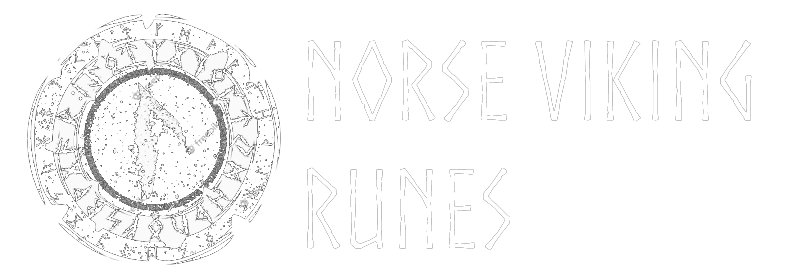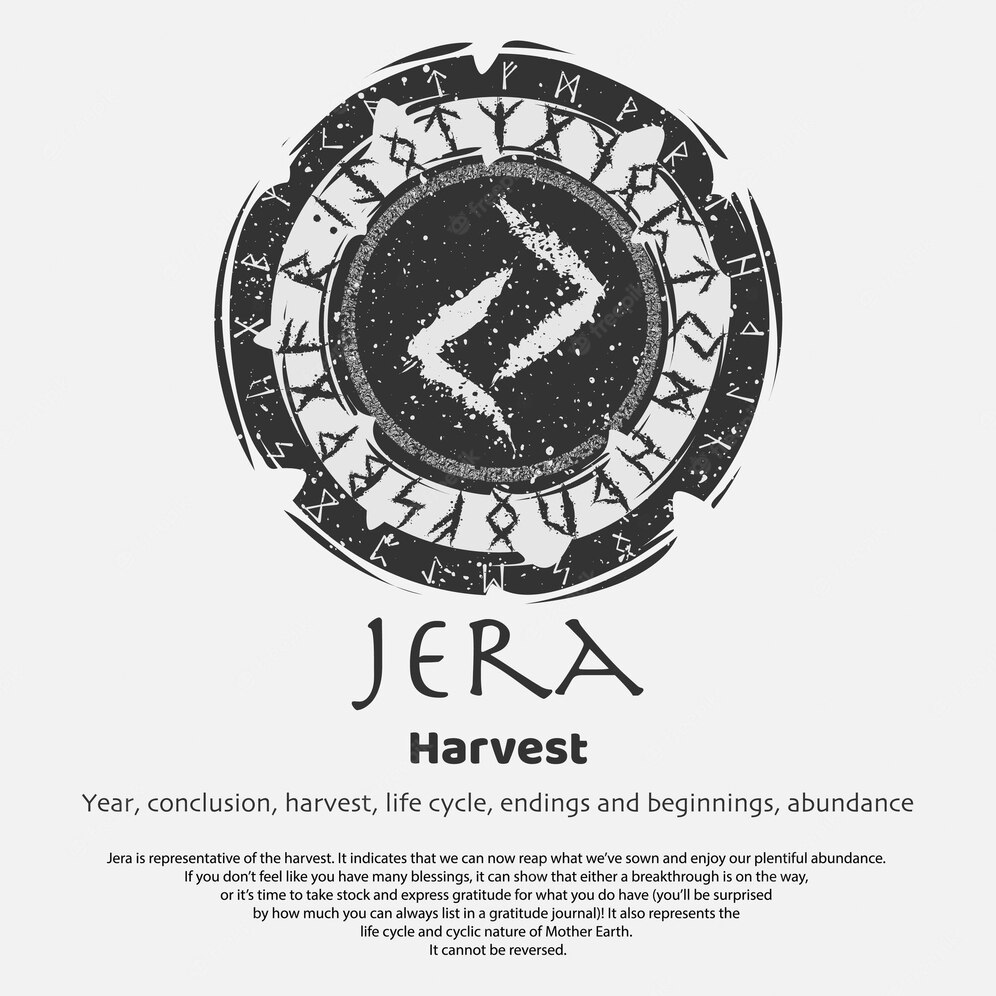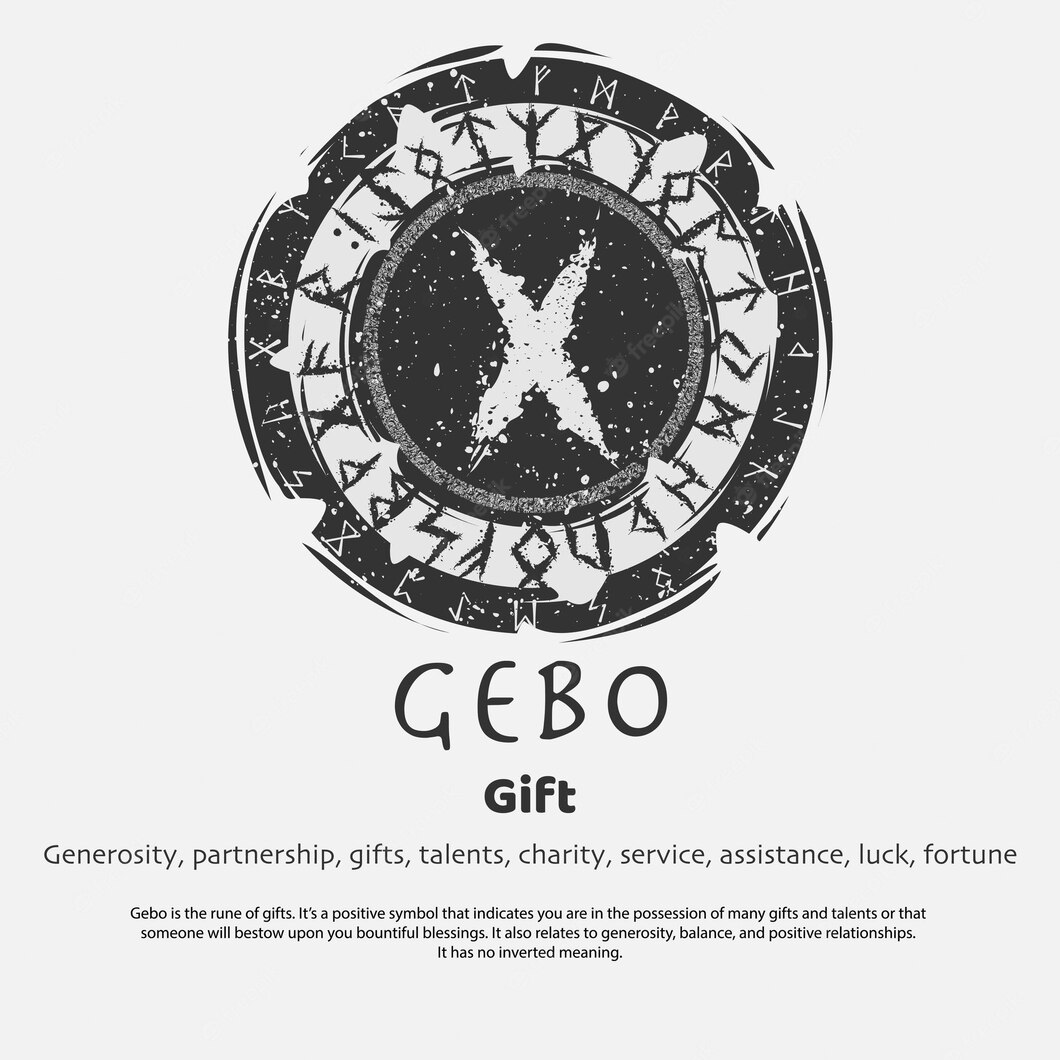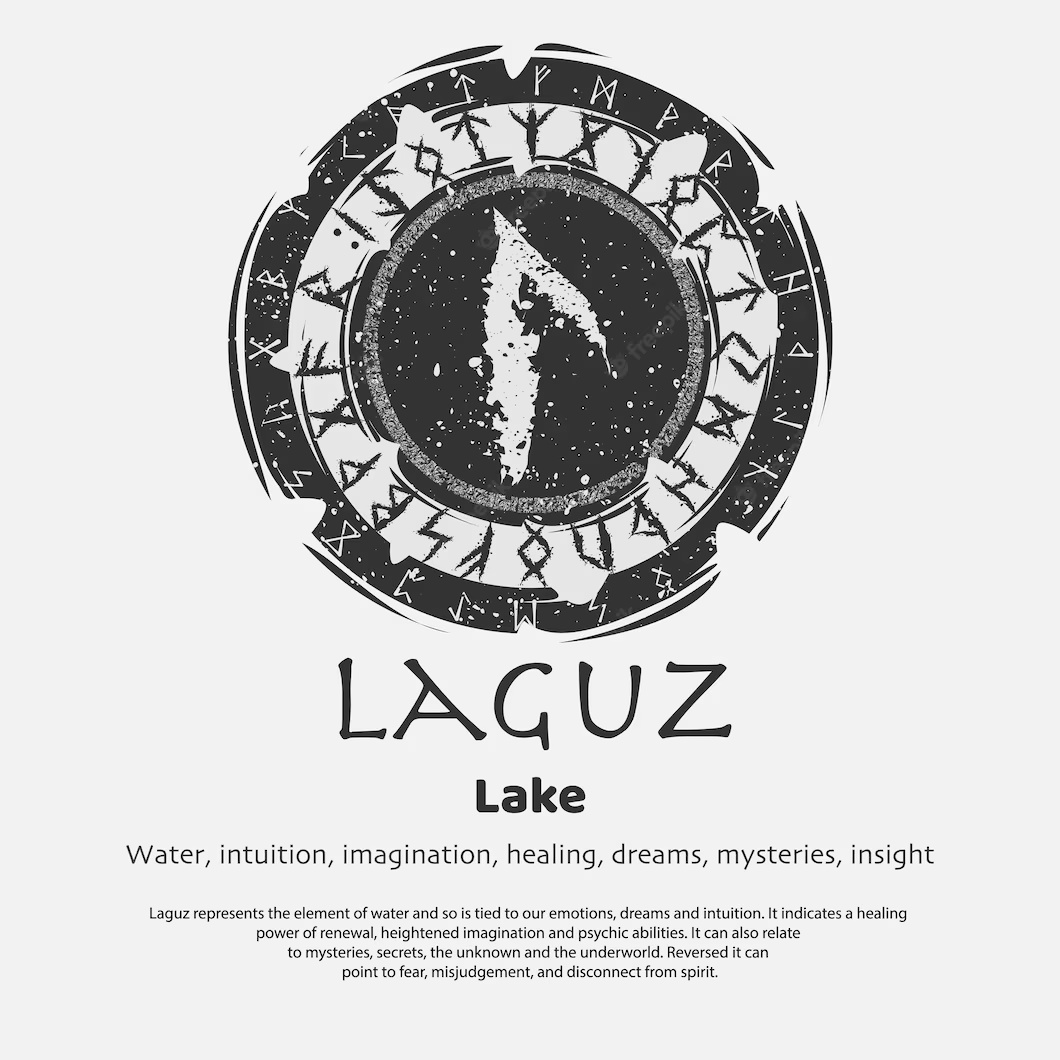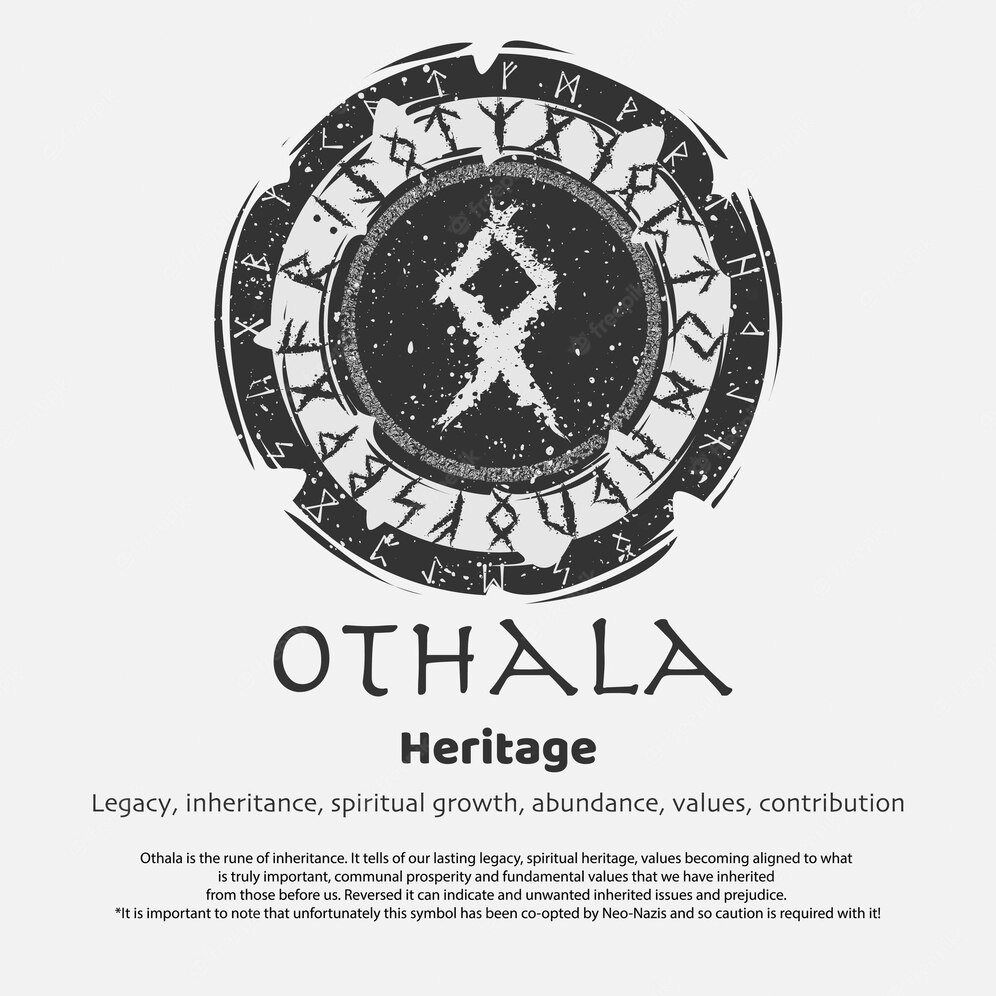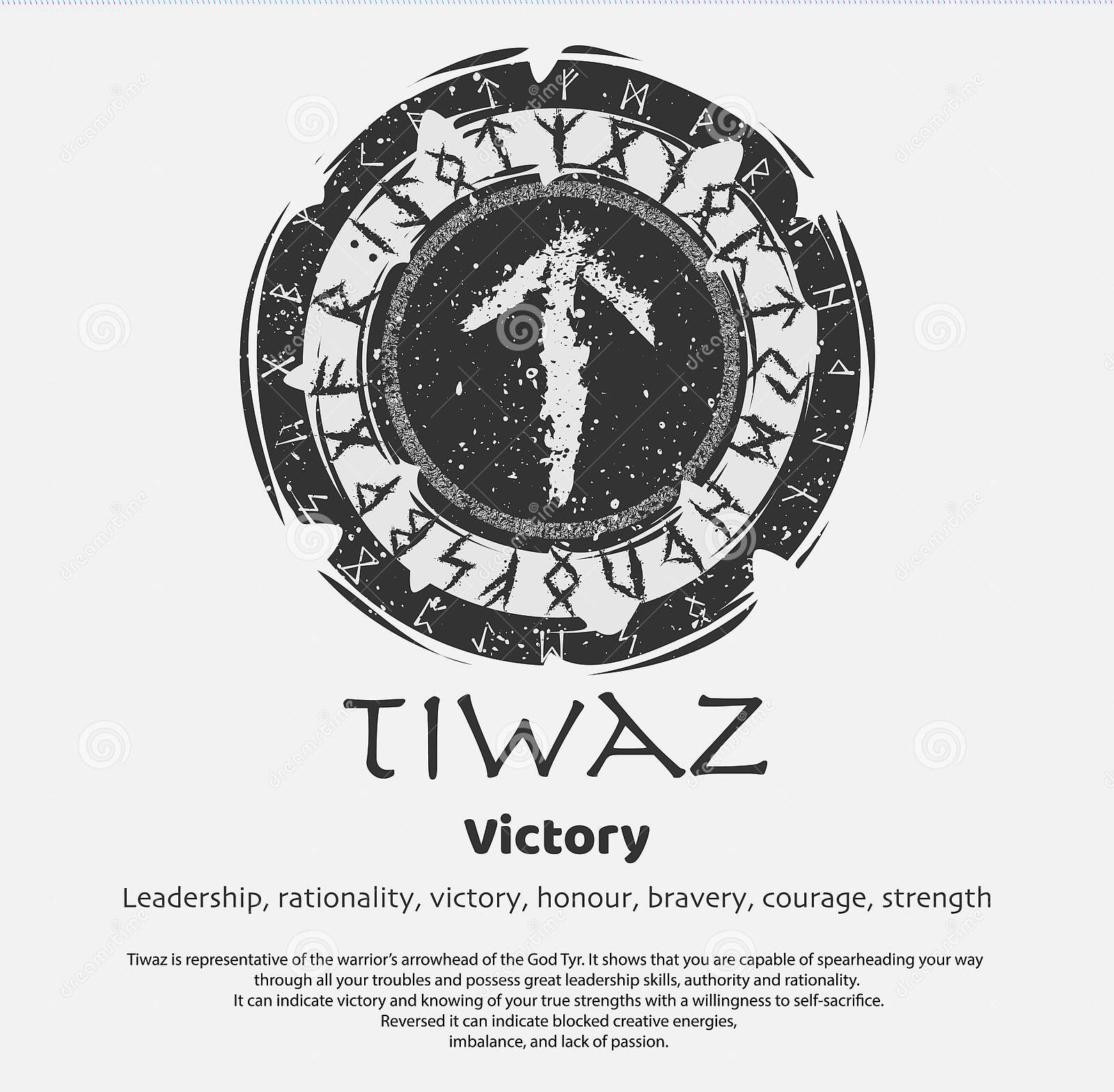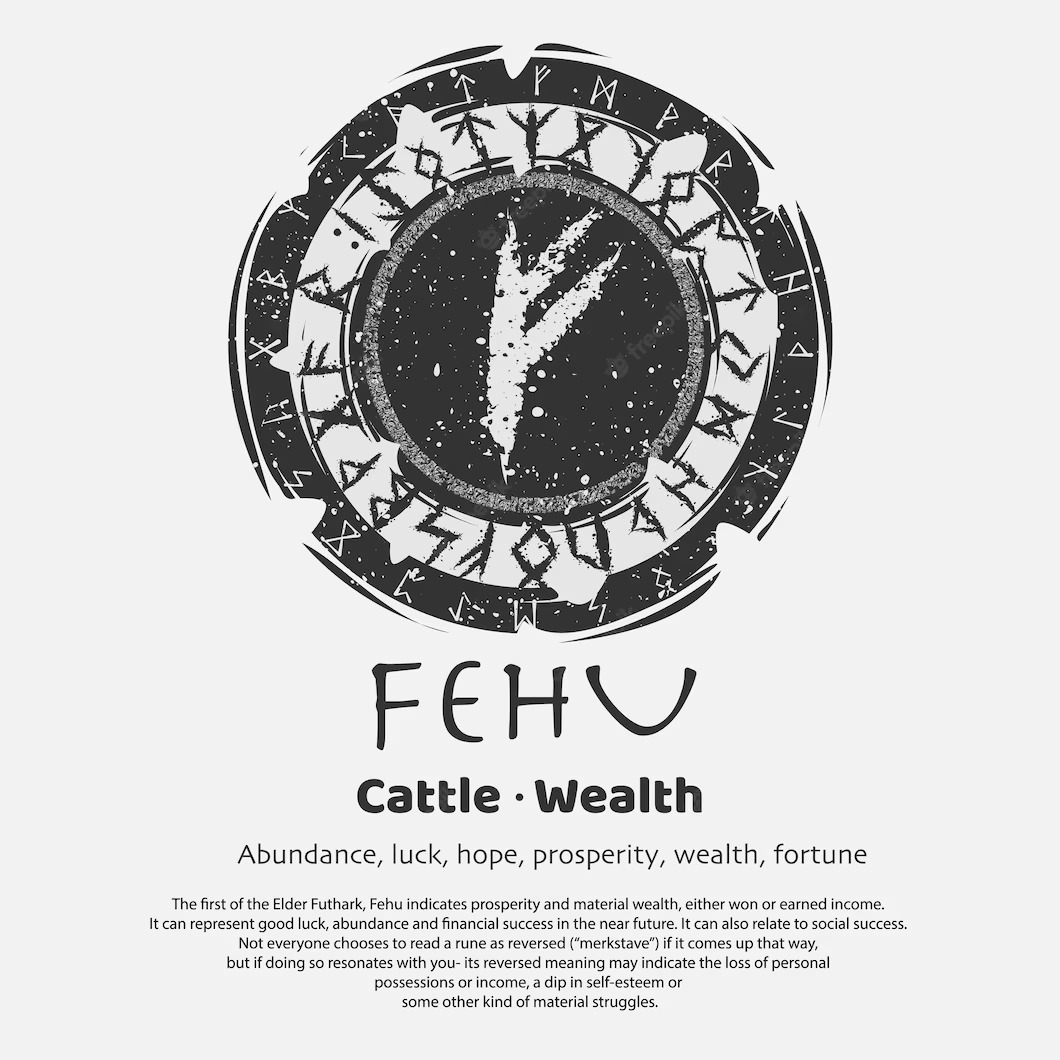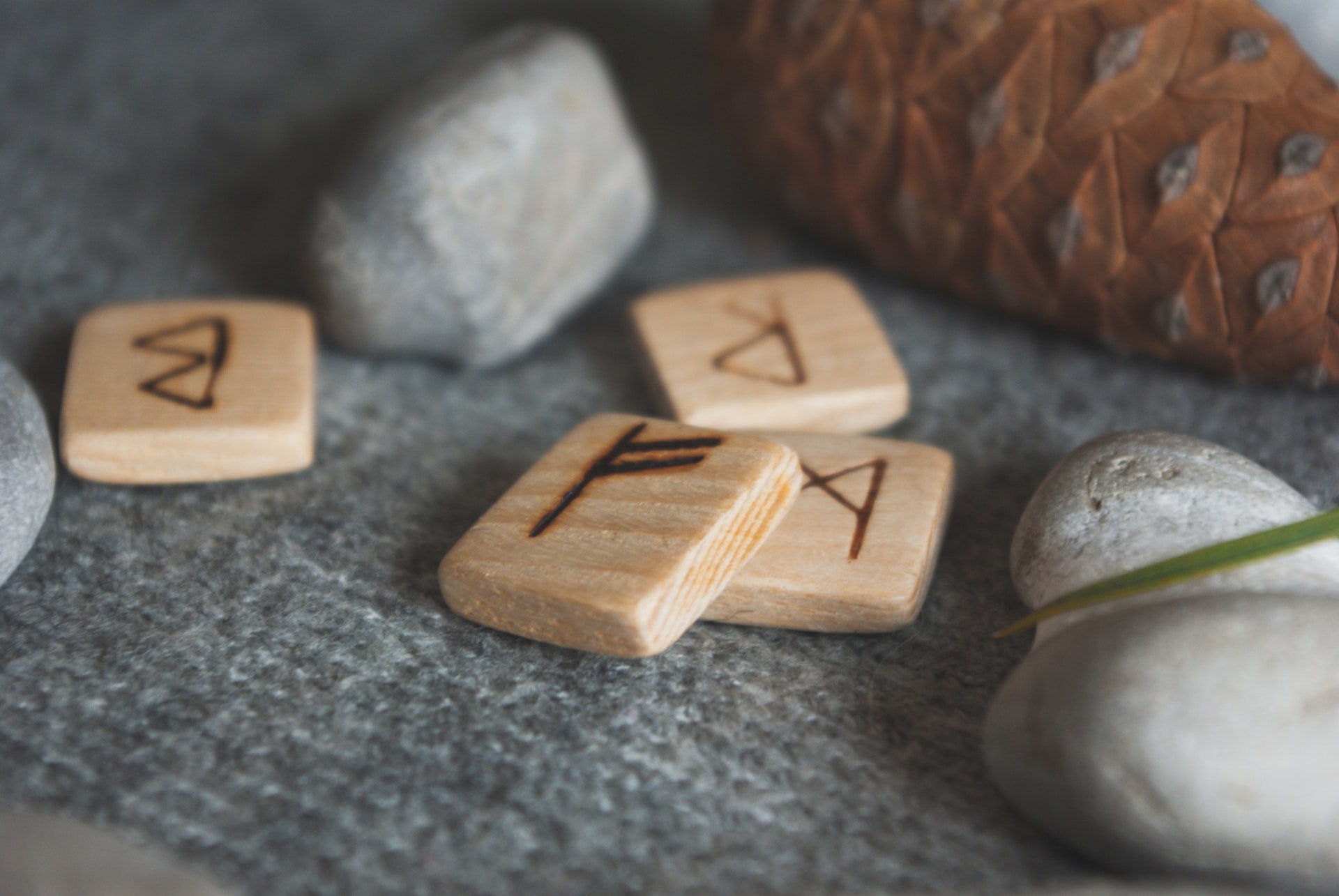Summon your inner viking with the Norse Viking Runes
Subscribe to Our Newsletter
125.000
Join the List of Subscribers
Proudly featured on:






A Comprehensive Guide to Viking Runes: Meanings, Origins, and More
The earliest forms of the Germanic language were written using Viking Runes (Norse Runes) during the Roman era. They were eventually used by the Germans, Anglo-Saxons, and the Norse. For more than a thousand years, the runes changed into writing styles that suited the needs of modern Germanic culture.
The symbol, meaning, and pronunciation of each Rune are described in this guide. The runic language is also described, along with how to read it.
Runes have long captured the imagination of people around the world. These ancient symbols, used by the Vikings and their predecessors, are more than just an alphabet; they have deep cultural, spiritual, and magical significance. This comprehensive guide will take you on a journey through the fascinating history and meanings of Viking runes, as well as their modern applications and influence on popular culture.
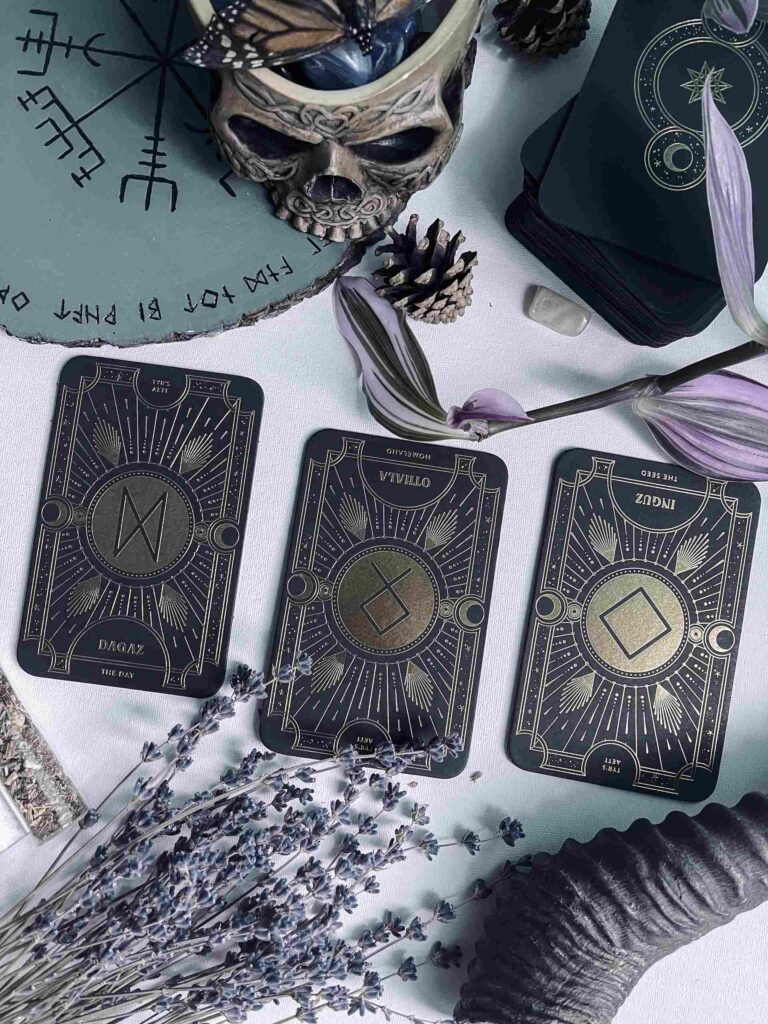
Origins and History Of The Norse Viking Runes
The word “rune” comes from the Old Norse word “rún,” which means “mystery” or “secret.” Runes have been used as a written language, magical symbols, and tools of divination since around the 2nd century AD. Although runes are most commonly associated with the Vikings, they were used by various Germanic and Scandinavian tribes, as well as the Celts and other ancient European cultures.
Two distinct runic alphabets emerged throughout history: the Elder Futhark and the Younger Futhark. The Elder Futhark is the oldest and most well-known, while the Younger Futhark evolved from the Elder Futhark and was used by the Vikings during their period of expansion and exploration.
Elder Futhark: The Oldest Runic Alphabet
The Elder Futhark consists of 24 runes and dates back to the 2nd to 8th centuries. It was used by various Germanic tribes and is named after the first six runes in the alphabet (Fehu, Uruz, Thurisaz, Ansuz, Raidho, and Kenaz), which spell “Futhark.” Each rune has a phonetic value, a symbolic meaning, and a connection to a particular god, element, or natural force. These meanings and associations made the runes more than just a written language; they were also used for magical and divinatory purposes.
Younger Futhark: The Simplified Runic Alphabet
As the Viking Age began around the 8th century, the Elder Futhark was simplified into the Younger Futhark, which consisted of only 16 runes. This new alphabet was better suited to the Old Norse language spoken by the Vikings, and it continued to be used until the Middle Ages, when the Latin alphabet gradually replaced it.
Elder Futhark Rune Meanings
Fehu: Cattle, Wealth, Prosperity
As a magical symbol, Fehu can be used to attract wealth and success. It also reminds us of the importance of generosity and sharing our good fortune with others, as hoarding wealth can lead to stagnation and loss.
Uruz: Strength, vitality, courage
Uruz embodies the raw power and strength of the wild ox. This rune represents physical strength, vitality, and the determination to overcome obstacles. Uruz also symbolizes the transformative power of nature and the need for personal growth and development.
When used in magic or divination, Uruz can signify the need for courage and resilience in the face of challenges. It encourages us to tap into our inner strength and to take charge of our lives, seizing opportunities for growth and change.
Thurisaz: Thor, protection, conflict
Thurisaz is associated with Thor, the Norse god of thunder and protector of humanity. This rune embodies the destructive power of nature, as well as the protective forces that guard against chaos and harm. It is a rune of conflict and confrontation, but also of protection and defense.
In magic and divination, Thurisaz can represent the need to face difficult situations or confront personal issues head-on. It urges us to recognize the power within ourselves to overcome challenges and protect ourselves from harm. Thurisaz also serves as a reminder that sometimes, conflict is necessary for growth and progress.
Ansuz: Odin, communication, wisdom
Ansuz is connected to Odin, the chief Norse god known for his wisdom, knowledge, and communication skills. This rune represents the power of speech, language, and creative expression. It also symbolizes divine inspiration and the quest for truth and understanding.
When used in magic and divination, Ansuz encourages us to seek wisdom and knowledge, to communicate effectively, and to listen to our intuition. It can also represent a message from the divine or a higher power, urging us to pay attention to the guidance and wisdom being offered.
Raidho: Journey, progress, movement
Raidho symbolizes travel, movement, and progress. It represents both physical journeys and the metaphorical journey of personal growth and development. This rune is associated with the rhythms and cycles of life, as well as the interconnectedness of all things.
In magical and divinatory contexts, Raidho indicates a need for change, adaptation, and forward movement. It encourages us to embrace new experiences, to learn from our past, and to forge ahead on our individual paths.
Kenaz: Fire, creativity, knowledge
Kenaz represents the transformative power of fire, both in its ability to create and to destroy. This rune is associated with creativity, learning, and knowledge. It symbolizes the inner fire that drives us to explore, innovate, and grow.
When used in magic or divination, Kenaz encourages us to seek out new knowledge, to ignite our creative passions, and to embrace the transformative power of change. It can also represent a need to shed old beliefs or habits in order to make way for new growth and understanding.
Gebo: Gift, partnership, balance
Gebo symbolizes the concept of gift-giving, partnership, and the balance of energy between individuals. This rune represents the importance of reciprocity, generosity, and maintaining harmonious relationships. Gebo also signifies the spiritual connection between people, emphasizing the importance of trust and mutual respect.
In magical and divinatory practices, Gebo encourages us to cultivate strong relationships, to give and receive in equal measure, and to nurture a sense of balance and harmony in our lives. It serves as a reminder that our connections with others are vital to our growth and well-being.
Wunjo: Joy, harmony, success
Wunjo is the rune of joy, happiness, and success. It represents the satisfaction and contentment that come from achieving one’s goals and enjoying the fruits of one’s labor. Wunjo is a symbol of harmony, unity, and the positive energy that arises when people come together in love and friendship.
In magic and divination, Wunjo signifies the presence of joy and happiness in one’s life, as well as the potential for success in one’s endeavors. It encourages us to embrace positivity, to celebrate our achievements, and to foster a sense of unity and harmony with those around us.
Hagalaz: Hail, disruption, transformation
Hagalaz represents the destructive and transformative power of hail. This rune symbolizes sudden changes, disruption, and upheaval. However, it also embodies the potential for growth and transformation that can come from such experiences.
In magical and divinatory practices, Hagalaz indicates a period of challenge or turmoil that may lead to significant change and growth. It urges us to adapt to unexpected situations, to find the hidden opportunities within difficult circumstances, and to learn from the trials we face.
Nauthiz: Need, constraint, determination
Nauthiz represents need, necessity, and the constraints that we face in life. This rune signifies the challenges and limitations that arise as we pursue our goals, as well as the determination and resourcefulness required to overcome them.
In magic and divination, Nauthiz encourages us to recognize our needs and desires, to confront our limitations, and to persevere in the face of adversity. It serves as a reminder that through struggle and determination, we can transform our challenges into opportunities for growth and success.
Isa: Ice, stillness, stagnation
Isa embodies the stillness and stagnation of ice, symbolizing a period of inactivity or lack of progress. This rune reminds us of the importance of rest, reflection, and patience in our lives.
When used in magic or divination, Isa can signify a need for introspection and self-examination, as well as the necessity of taking a step back from the chaos of life to find clarity and perspective. It also warns of potential obstacles or delays that may hinder our progress.
Jera: Harvest, reward, cycles
Jera is the rune of harvest, representing the cycles of nature and the rewards that come from patience and hard work. This rune symbolizes the passage of time, the changing seasons, and the importance of balance and harmony in our lives.
In magical and divinatory contexts, Jera indicates a period of reaping the rewards of past efforts and the potential for positive change and growth. It encourages us to maintain a sense of balance and harmony, to recognize the natural cycles and rhythms of life, and to embrace the process of transformation.
Eihwaz: Yew tree, stability, protection
Eihwaz is associated with the yew tree, a symbol of stability, protection, and longevity. This rune represents the enduring strength and resilience that comes from a strong foundation and a clear sense of purpose.
When used in magic or divination, Eihwaz encourages us to cultivate inner strength and stability, to protect ourselves from external influences, and to focus on our long-term goals and aspirations. It also serves as a reminder that, like the yew tree, we have the power to withstand adversity and to grow stronger through our experiences.
Perthro: Mystery, chance, fate
Perthro is the rune of mystery, chance, and the unknown. It represents the unpredictable nature of life, the hidden forces that shape our destinies, and the role of fate and chance in our lives.
In magical and divinatory practices, Perthro encourages us to embrace the mysteries of life, to take risks and explore the unknown, and to recognize that there are forces at work beyond our understanding. It also serves as a reminder that we have the power to shape our own destinies, even in the face of uncertainty and change.
Algiz: Elk, protection, intuition
Algiz represents the protective power of the elk, symbolizing the need for defense and self-preservation. This rune encourages us to develop our intuition and to trust in our inner guidance when facing challenges or threats.
In magic and divination, Algiz signifies a need for protection and a heightened awareness of our surroundings. It urges us to trust our instincts and to cultivate a strong sense of self in order to navigate the challenges that life presents.
Sowilo: Sun, success, energy
Sowilo is the rune of the sun, representing success, vitality, and the life-giving energy that sustains us. This rune symbolizes the power of light to dispel darkness, the warmth and nourishment provided by the sun, and the positive energy that comes from living in harmony with nature.
In magical and divinatory practices, Sowilo indicates a period of success, achievement, and personal growth. It encourages us to harness the power of the sun and to embrace the positive energy that comes from pursuing our passions and living our lives with purpose.
Tiwaz: Tyr, justice, honor
Tiwaz is associated with Tyr, the Norse god of justice and law. This rune symbolizes the principles of honor, fairness, and the moral courage required to stand up for what is right. Tiwaz represents the importance of maintaining balance and order in our lives and in society as a whole.
In magic and divination, Tiwaz encourages us to uphold our principles, to act with integrity, and to seek justice in our dealings with others. It serves as a reminder that our actions have consequences, and that we must be willing to accept responsibility for the choices we make.
Berkano: Birch tree, growth, renewal
Berkano is linked to the birch tree, a symbol of growth, renewal, and new beginnings. This rune represents the potential for personal transformation, the cycles of life, and the need for constant growth and development.
In magical and divinatory contexts, Berkano signifies a period of rebirth or renewal, indicating that it may be time to let go of the old and embrace the new. It encourages us to nurture our personal growth and to recognize the opportunities for change and transformation that life presents.
Ehwaz: Horse, partnership, trust
Ehwaz symbolizes the horse, a powerful and loyal companion. This rune represents the importance of partnership, cooperation, and trust in our relationships with others. Ehwaz emphasizes the need for mutual support and understanding, as well as the value of working together towards common goals.
In magic and divination, Ehwaz encourages us to foster strong, supportive relationships and to trust in the power of partnership and collaboration. It also serves as a reminder that we are not alone in our journey, and that we can achieve more by working together than by struggling alone.
Mannaz: Humanity, cooperation, intelligence
Mannaz represents humanity and the collective consciousness. This rune symbolizes the interconnectedness of all people, the importance of cooperation and collaboration, and the power of human intelligence and creativity.
In magical and divinatory practices, Mannaz encourages us to recognize our shared humanity, to cultivate empathy and understanding, and to work together to overcome challenges and build a better world. It serves as a reminder that our actions affect not only ourselves but also those around us, and that we have a responsibility to use our intelligence and creativity for the greater good.
Laguz: Water, emotions, intuition
Laguz is the rune of water, symbolizing the flow of emotions and the depths of our subconscious mind. This rune represents the importance of trusting our intuition, exploring our emotional landscape, and navigating the ever-changing currents of life.
In magic and divination, Laguz encourages us to connect with our emotions, to trust our instincts, and to be open to the ebb and flow of life’s experiences. It also serves as a reminder that, like water, we have the power to adapt and overcome obstacles in our path.
Ingwaz: Ing, fertility, potential
Ingwaz is associated with Ing, the Norse god of fertility and agriculture. This rune symbolizes the potential for growth, abundance, and prosperity. Ingwaz represents the nurturing energy required to cultivate our talents and bring our dreams to fruition.
In magical and divinatory contexts, Ingwaz signifies a period of growth, development, and the realization of potential.
Elder Futhark, Guide To The Runes
The Elder Futhark, also known as Elder Fu’ark (the ‘th’ sound in English ‘thin’), or elder Fu’ark/Futhark, is the earliest runic script that has been classified. It was in use until around the year c. In the Germanic world, 700 CE. It is named after the first six characters in the alphabet (f-u-t-h-a-r-k) and has a total of 24 characters. Each rune was named after something that begins (or in one case, ends) with that sound. The runes are arranged in three rows of eight, each group being referred to as an aett (plural: ttir). The names of the Younger Futhark and Anglo-Saxon runes have been preserved in manuscripts from the ninth and tenth centuries CE, but Elder Futhark does not enjoy the same luxury. The Elder Futhark rune-names have, however, been recreated to the best of our present-day abilities, relying primarily on the Younger Futhark names and augmented with Anglo-Saxon and even Gothic.
Elder Futhark was used to write Proto-Germanic, Proto-Norse, Proto-English, and Proto-High German, and it survives today in just under 400 inscriptions (found so far), the majority of which show significant wear and tear and are only partially readable. Elder Futhark was used to write these languages because they are geographically quite widely spread. This number almost certainly only represents a small portion of the total; the rest must have been lost in time and space. In the beginning, they were found in the form of names on metal and wood, both of which have a bad track record when it comes to withstanding the test of time. The typically Scandinavian runestones, some of which were in Elder Futhark as opposed to the much more commonly depicted later Younger Futhark, were also popular surfaces, as were military equipment, coins, and jewelry such as bracteates, brooches, or combs. Notwithstanding the fact that Scandinavia, northern Germany, and eastern Europe were the first places where such things were found, after c. Southern Germany, the Netherlands, and England joined the club in 400 CE. Runic writing is prevalent in societies up to c because it primarily emphasizes ownership and exhibits no discernible connection to society at any higher level. It is assumed that there was no central function in 700 CE.
It’s vital to remember that the rune row that is typically given for the Older Futhark today is merely a major line, despite the fact that the Elder Futhark was largely uniform. Here is the Elder Futhark rune row that is most frequently used, beginning with the rune itself, its transliteration, its inferred (Proto-Germanic) name, and its meaning:
ᚦ þ (‘th’) *þurisaz “giant”
ᚨ a *ansuz “one of the Æsir (gods)”
ᚱ r *raiðō “ride”/”journey”
ᚲ k *kaunan “boil”/”blister” (or maybe “torch”)
ᚷ g *gebō “gift”
ᚹ w *wunjō “joy”
ᚺ h *hagalaz “hail” (the precipitation)
ᚾ n *nauðiz “need”/“emergency”/”desperation”
ᛁ I *īsaz “ice”
ᛃ j *jēra “year”, but typically “harvest”/”good harvest”
ᛈ p *perðō? “pear tree”? (unclear)
ᛇ ï/æ? *eihaz/ei(h)waz “yew tree” (but very confusing attestation)
ᛉ z *algiz? “elk“
ᛊ s *sōwilō “sun”
ᛏ t *tīwaz/*teiwaz “Týr” (the god)
ᛒ b *berkanan “birch”
ᛖ e *ehwaz “horse”
ᛗ m *mannaz “man”
ᛚ l *laguz “lake” (or maybe “leek”)
ᛜ ŋ (‘ng’) *ingwaz “Ing” (/Yngvi, another name of the god Freyr)
ᛞ d *dagaz “day”
ᛟ o *ōþala/*ōþila “inherited property”/”possession”
Younger Futhark
YOUNGER FUTHARK HEADLINES IN THE GREAT BOOM IN RUNIC INSCRIPTIONS AFTER 700 CE DURING VIKING AGE SCANDINAVICA, WHERE IT IS FOUND ON RUNESTONES WHICH DO THROUGHOUT THE LANDSCAPE.
After c. Elder Futhark was modified into the Younger Futhark (or Younger Fu’ark) script in Scandinavia around the year 700 CE. This script was used for writing Old Norse, the language of the Viking Age. It was decided to eliminate eight of the initial twenty-four characters, as well as simplify or alter the appearance of several others, and there was an overall increase in the amount of variation present. It is crucial since it is the medium of our sole written source from the Scandinavian Viking Age. The runes that were scattered are ᚷ, ᚹ, ᛇ, ᛈ, ᛖ, ᛜ, ᛟ, and, which can be transliterated as ᛞ – transliterated as g, w, ï/æ, p, e, ŋ, and d. The ttir, or runic groups, that were familiar from Elder Futhark remained in place, although they were expanded to have six, six, and four members, respectively. The distinction between voiced and unvoiced consonants, such as k and g, which were both written with the rune, was no longer made explicit in writing in the Younger Futhark, when runes might have more than one conceivable sound associated to them. Even vowels were forced to adapt, as the meaning of each vowel had to be deduced from the context in which it was found. Because of this, reading this runic script can be rather challenging (for us, today, at least).
It appears that this new script was adopted in a lightning-fast manner, possibly as a result of a purposeful effort, but most likely at least influenced by changes in the language or in sounds. Michael Barnes explains how,
…by the beginning of the eighth century, all, or practically all, rune-carvers were using the same sixteen runes, which is a remarkable example of unity in spite of the fact that there did not appear to be a central authority to encourage it. Yet that was the extent of the unity. When it came to the realization of many of the sixteen runes, a far more open policy prevailed. This allowed for more people to participate in the process. Several characters were simplified as a result of some carvers’ experiments with runic form. Others either opposed or were oblivious to the development. Many traditions emerged. (63)
In Denmark, for example, a “long-branch” version of the runic script was preferred, whereas Norway and Sweden stuck to “short-twig,” and the Hälsingland area in Sweden even developed a set of runes – Hälsinge/staveless rune – missing the main staves (except in the i-rune) in a zealous simplification. The rune row for Younger Futhark below is a composite that shows the most prevalent forms across the board. The row begins with the rune, followed by its transliteration, its (Old Norse) name, and its meaning:
ᚠ f/v fé “wealth”/“cattle”
ᚢ u/w, y, o, ø úr “slag from iron production”/”rain(storm)”
ᚦ ᚦ, ð (‘th’) ᚦurs (‘thurs’) “giant”
ᚬ o, æ áss/óss “Æsir”/”estuary”
ᚱ r reið “ride”/(“vehicle”)
ᚴ k, g kaun “ulcer”/”boil”
ᚼ h hagall “hail”
ᚾ n nauðr “need”/”threat”/”emergency”
ᛁ I, e ísa/íss “ice”
ᛅ a, æ ár “year”, typically “good year”/”good harvest”
ᛋ s sól “sun”
ᛏ t, d Týr “Týr” (the god), also used for any god
ᛒ b, p björk/bjarkan/bjarken “birch”
ᛘ m maðr “man”/”person”
ᛚ l lǫgr (lögr) “lake” or a small body or water
ᛦ r yr “yew”, yew tree, or maybe “elm”
The number of known runic inscriptions for Viking Period Scandinavia skyrockets about 700 CE, with runes found on frequently-decorated runestones of varying sizes that dot the landscape. In stark contrast to the meager sum of less than 400 Elder Futhark inscriptions, these stones contributed to an increase in the number of Scandinavian runic inscriptions during this period to approximately 3,000. When all mediums are considered, the script provides information on ownership or inheritance, politics (power struggles, raiding and conquests, or significant invasions), religion (including the growth of Christianity), travel (both domestically and internationally), and literature and myth.
Norse and Viking Runes: Where Did They Come From?
The earliest variants of the Germanic language were written using runes during the Roman era. They were subsequently adopted as a written language by the Germans, Anglo-Saxons, and Norse. During the course of more than a thousand years, the runes developed into several writing styles that were suitable for the requirements of modern Germanic civilization.
It was believed that the deeper mysteries of reading and writing could be found. Runes and magic were intimately related. The Norse and other Germanic people thought that the runes were tied to divine powers, whether they were utilized on charms or summoned by gods. In the present day, this connection has not been completely lost. Runes are being written anew in charms, rituals, and prayers after hundreds of years of practical use.
The History of Runes: A More In-Depth Exploration
There is significant agreement on the fundamental structure of runic writing, despite the fact that runologists disagree on many of the specifics about the history of runic writing. The runes are thought to have been derived from one of the numerous Old Italic alphabets that were in use among the Mediterranean peoples of the first century CE. These people lived to the south of the Germanic tribes. Earlier Germanic sacred symbols, such as those preserved in northern European rock carvings, were probably also influential in the development of the script.
The Meldorf brooch, which was made in the north of what is now Germany around the year 50 CE, has what is thought to be the first possible runic script inscription. This inscription was found on the brooch. The inscription, on the other hand, is not clear at all, and academics disagree on whether or not the letters are runic or Roman. The earliest unequivocal runic inscriptions can be found on the Vimose comb from Vimose, Denmark, and the vre Stabu spearhead from southern Norway, both of which date to about 160 CE. The Kylver stone from Gotland, Sweden, which dates to around 400 CE, is the first known carving of the full futhark (alphabet), in order.
Germanic warbands, the major northern European military institution of the period, would have been exposed to Italic writing firsthand during wars among their southern neighbors. This is how writing from southern Europe reached northern Europe. This hypothesis is supported by the association that runes have always had with the god Odin, who, during the Proto-Germanic period, was known by his original name, *Woanaz, and served as the divine model of the human warband leader as well as the unseen patron of the activities of the warband. Runes have always been associated with Odin. According to the Roman historian Tacitus, by the first century, Odin (“Mercury” in the interpretatio romana) had already established himself as the preeminent god in the pantheons of many of the Germanic tribes. For the purposes of what we are doing here, it makes little difference whether the runes and the religion of Odin emerged at the same time or whether the latter existed before the former. Georges Dumézil, a renowned Indo-European scholar, observes:
The runes, no matter how recent they may be, would have been under Odin’s control if he had been the first and always the highest magician. New and especially powerful tools for magic works would automatically and unquestionably fall under his purview. Before the term of that knowledge became the technical name of signals both phonetic and magic that came from the Alps or elsewhere, but did not lose its old, greater connotation, Odin may have been the patron, the possessor par excellence of this redoubtable power of secrecy and secret knowledge .
The runes, however, did not originate from a source as common as an Old Italic alphabet, according to the ancient Germanic peoples themselves. The runes were never “created,” but rather are timeless, pre-existing forces that Odin himself discovered after enduring a severe trial. This story is preserved for us in the Old Norse poem known as Hávamál, which translates to “The Sayings of the High One.”
I am aware that I hung myself.
On the wind-blasted tree
All nine nights,
speared by me
And granted to Odin,
I gave up for me.
On that pole
Nobody is aware of it.
Where its roots are located.
I did not receive any assistance,
Not even a drop from the horn.
Looking down,
I began using the runes –
I grabbed them while screaming –
After that, I began to retreat.
Odin hangs himself from Yggdrasil, the world tree that sits in the center of the Germanic cosmos and whose branches and roots hold the Nine Worlds. The Well of Urd, a source of immense wisdom, is located directly beneath the world tree. The seas of this region appear to be the runes’ original home. This is also hinted to in another Old Norse poetry called the Voluspá, which translates to “Insight of the Seeress”:
Yggdrasil is a kind of oak.
White hail fell on a powerful tree.
The dews that settle in the lowlands originate there.
Above Urd’s Well, it maintains its evergreen appearance.
Very intelligent maidens emerge from there.
Three from the lake that is located beneath the pole.
Urd and Verdandi are the names of two of them.
Skuld the third; they carve into the tree.
Children’s lives and fates.
The “three maidens” in question are the Norns, and the carvings on their bodies are almost certainly runes. The ability of the Norns to carve the fates of all beings is thus clearly linked to the Well of Urd, the runes, and magic.
Popular Rune Meanings And Application Guides
All Viking Rune Meanings
Jera Rune Meaning – The Harvest Rune
The Viking age, a captivating period in history, has bequeathed a fascinating cultural heritage that continues to enthral modern society. Among the most intriguing aspects …
Gebo Rune Meaning – The X Rune
The Gebo rune, also known as Gyfu, is the seventh rune of the Elder Futhark and holds deep significance within the ancient Norse tradition. Associated …
Laguz Rune Meaning – The Water Rune
Laguz, also known as Lagu, is the 21st rune of the Elder Futhark and holds a special place within the ancient Norse tradition. Associated with …
Othala Rune Meaning – The Family Rune
The Othala rune, also known as Odal or Othila, is the 24th and final rune in the Elder Futhark runic alphabet. This rune embodies the …
Tiwaz Rune Meaning – The Warrior Rune
Tiwaz, also known as Tyr, is the 17th rune of the Elder Futhark and holds a special place within the ancient Norse tradition. Associated with …
Fehu Rune Meaning – The Wealth Rune
The Fehu rune is a powerful symbol within the Elder Futhark, signifying wealth, abundance, and prosperity. As a rune expert, I will explore the rich …
Latest Posts
The 5 Best Runes For Confidence
Confidence plays a crucial role in our personal and professional lives, influencing our ability to tackle challenges, seize opportunities, and realize our full potential. Harnessing …
The 4 Best Runes For Luck
Luck can often be a powerful ally in achieving our goals and navigating the ups and downs of life. Norse runes, as ancient symbols of …
The 4 Best Runes For Wealth
Attracting wealth and abundance is a goal for many, but it can sometimes feel elusive or challenging. By harnessing the ancient wisdom of runes, you …
